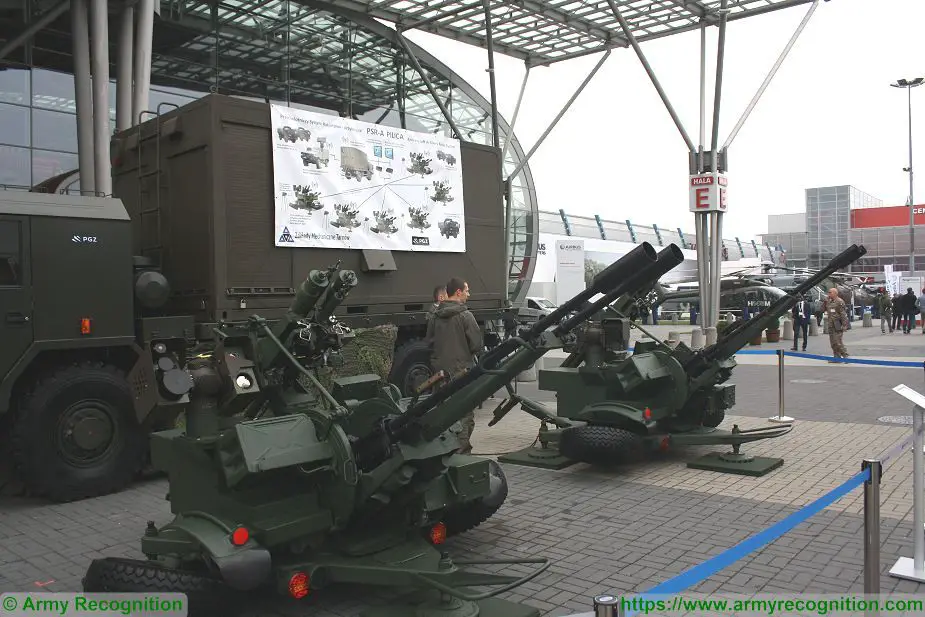Analysis modernization & development of Polish Army in 2017
During the last 2 years 250 contracts were signed by the Polish MoD for the modernization of the Armed Forces, which amounted to 20 billion PLN. 160 of them amounted to 13 billion PLN and were assigned to Polish industry. In 2016 and 2017 respectively the budget of the Polish MoD was implemented 100%, meaning totally and properly, and in 2016,for the first time in 8 years, the Polish MoD spend all funds dedicated to modernization of its armed forces.

Leopard 2A4 main battle tank of Polish army (Picture source Army Recognition)
The following contracts can be found amongst the biggest contracts, the implementation of which rapidly increases the defence and striking potential of the Polish Armed forces: contracts for the modernization of 128 Leopard 2A4 tanks, deliveries of 64 RAK mortars, 6 batteries for the short range missile-artillery anti-aircraft system Pilica; 1300 missiles for the mobile anti-aircraft system Poprad, 1000 anti-tank guided missiles SPIKE, 6 vessels for technical protection and conducting rescue operations on sea named HOLOWNIK.
The contract with Huta Stalowa Wola (Stalowa Wola Steel Works) for 96 pieces of 155mm self-propelled tracked howitzers Krab amounts to 4.5 billion PLN. This is the biggest procurement in the Polish defence industry since 1989. The first pieces were already sent to the 11 Mazurskie Artillery Regiment in Węgorzewo.
Contract for 64 pieces of 120mm automatic mortars „Rak“ with a KTO Rosomak chassis and 32 command vehicles amounts to almost 1 billion PLN. The first elements of the company firing module for the 120mm self-propelled tracked howitzer RAK with a wheeled chassis were send by Huta Stalowa Wola in June 2017 to the 17 Mechanized Brigade in Międzyrzecze. The elements of the second module were sent to the 12 Mechanized Brigade in Szczecin.
The first part of the 53 000 modular assault rifles (GROT) will be soon available for the military. It is the biggest contract for the delivery of rifles after 1989. This contract amounts to almost half a billion of PLN and the procurement is to be executed by 2020. A symbolic hand-over of those rifles to the Territorial Defence units took place in Warsaw on November, 30 in front of the Stefan Grot-Rowecki Monument in Warsaw.

Short range missile-artillery anti-aircraft system Pilica (Picture source Army Recognition)
A breakthrough project of amending the law on modernization and financing of Armed Forces of the Republic of Poland was created in the Polish MoD, which includes an increase of funds for defence. The act of law passed by the Polish parliament on September 15, foresees and increase from 2% of GDP to 2.5% of GDP in 2030.
The reinforcement of the defence potential of Poland is an absolute necessity. For the first time after 1989 a substantial increase of the size of the Polish Army takes place. The creation of the Territorial Defence and building capabilities of this formations complies with this necessity. 200,000 soldiers is the target number of soldiers in the Polish Army.
Currently eight thousand soldiers serve in the Territorial Defence. The formation of the fifth type of Armed Forces started at the beginning of 2017. In 2017, during 7 months from the moment the first soldiers were accepted to the Territorial Defence, 64 basic, supplementing and rotational trainings were conducted. Up to now a Command of the Territorial Defence was established, as well as three brigades in the Podlaskie, Lubelskie and Podkarpackie voivodship. Soldiers are already being trained in those units. Next brigades are being formed: one in Warmia and Mazury region, two in Mazowsze region. The structures of those units are currently being supported with professional human resources and the first training of volunteers in those units is planned for first quarter of 2018. The idea, concept and pace of forming the Territorial Defence is appreciated by our allies and experts in Poland and NATO. Russian politicians and soldiers are firm opponents of the Territorial Defence.
The abovementioned information are a reflection of a systematically conducted armaments policy, aiming at an efficient, realistic and quick modernization in order to reinforce the Polish Armed Forces and the Polish defence industry. Current procurements are not a result of pressure from lobbying units, but a result of objective analysis and research conducted also during the Strategic Defence Review.


























